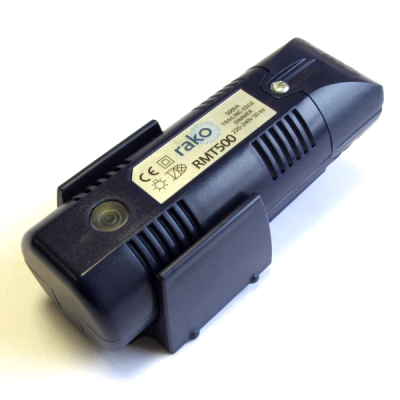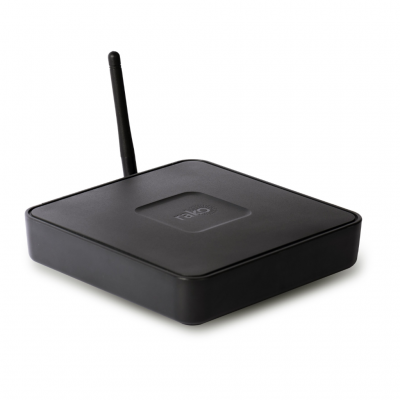
Brighten Your Home, Preserve Nature: Eco-Friendly Lighting Design in the UK
Eco-friendly residential lighting design in the UK is an essential topic, given the increasing focus on sustainability and energy efficiency. With the UK government's commitment to reducing carbon emissions and consumers becoming more environmentally conscious, there is an imperative shift towards eco-friendly lighting solutions. This article takes an analytical approach in exploring the various aspects of eco-friendly lighting in the UK, highlighting key considerations for homeowners, the importance of these solutions, and practical ways to implement energy-efficient lighting design. The piece adopts British English spelling and will focus on illuminating the subject matter in an engaging and easily digestible manner.
Understanding Eco-friendly Lighting
Eco-friendly lighting refers to the use of energy-efficient light bulbs and design practices that help reduce electricity usage and carbon emissions, ultimately benefiting the environment. The UK government has increasingly placed importance on eco-friendly lighting as part of its target to achieve a carbon-neutral status by 2050. Adopting sustainable lighting solutions not only benefits the environment but also results in reduced costs for consumers, ultimately lowering household energy bills.
The history of light bulbs spans over 100 years, with numerous innovations leading to more efficient and environmentally friendly lighting options. The development of bulb technology includes the following significant breakthroughs:
These light bulbs have been used for over a century and consist of tungsten filament inside a glass enclosure. Incandescent bulbs are less energy-efficient compared to newer technologies, resulting in higher electricity consumption and lower lifespan.
Halogen Light Bulbs
These bulbs use similar technology to incandescent bulbs, with the addition of a small amount of halogen gas to enhance brightness and efficiency. While halogen bulbs provide a higher light output than incandescent bulbs, they also consume more energy and emit significant heat.
CFLs are a more energy-efficient alternative to older bulb technologies, consuming around 75% less energy than incandescent bulbs and lasting up to 10 times longer. These bulbs utilise a mixture of gases and a small amount of mercury to create ultraviolet light, which is then converted into visible light by a fluorescent coating on the inside of the glass.
LEDs are the most energy-efficient option available today and are rapidly becoming the standard for residential lighting in the UK. LEDs use semiconductor technology to produce light, resulting in minimal heat output and reduced energy consumption. LED bulbs have a long lifespan, often exceeding 20,000 hours of use.
Commonly used for commercial and industrial applications, LFLs provide a high level of light output while utilising less energy than traditional incandescent bulbs. These lights are typically used in settings where long operating hours and consistent illumination are necessary.
The UK's Approach to Phasing Out Inefficient Bulbs
The UK government has implemented policies to phase out inefficient light bulbs, starting with traditional incandescent bulbs and gradually moving towards halogen bulbs. In 2018, the European Union implemented a new regulation, which banned the sale of halogen bulbs across member states, including the UK. Currently, the market has shifted its focus to more energy-efficient bulbs, primarily CFLs and LEDs.
Phasing out inefficient bulbs has resulted in energy savings for consumers and a substantial reduction in carbon emissions. As a result, homeowners have seen a decrease in electricity bills, and the UK's overall environmental footprint has been significantly reduced. This shift towards sustainable and energy-efficient lighting aligns with the nation's climate goals, ultimately supporting the push towards a cleaner, greener future.
Understanding the Types: CFLs vs LEDs
When it comes to eco-friendly residential lighting design in the UK, both CFLs and LEDs offer viable alternatives to traditional bulbs. However, LEDs are generally considered the more sustainable choice due to their longer lifespan and lower energy consumption. Additionally, as LED technology has advanced, prices have significantly reduced, making them a more affordable option for homeowners.
A crucial aspect of choosing the right eco-friendly light bulb is understanding lumen values. Lumens represent the amount of light emitted by a bulb, with higher values indicating greater brightness. By considering the rating of lumens per watt, homeowners can select the most energy-efficient bulbs that provide the desired level of illumination.
Choosing the Right Colour
Bulbs are available in various colour temperatures, which determines the warmth or coolness of the light emitted. Measured in kelvins (K), colour temperature ranges from warm (around 2700K) to cool (5000K and above). It is vital to select the appropriate colour temperature based on the intended use and desired ambience of the space to maximise both energy efficiency and visual comfort.
Savings on Electricity Bills
Switching to eco-friendly lighting can result in substantial savings for homeowners, as efficient light bulbs utilise up to 85% less energy compared to traditional incandescent bulbs. This translates to long-term reductions in electricity costs, making it a financially advantageous choice.
By adopting eco-friendly lighting, UK households can significantly contribute to reducing carbon dioxide emissions. As energy-efficient bulbs consume less energy, the demand on power stations is reduced, ultimately lowering CO2 emissions and contributing to the UK's climate goals.
In addition to selecting the right eco-friendly bulbs, homeowners must adopt smart lighting habits to further reduce energy consumption. These tips include:
Developing a habit of turning off lights when not in use is essential, as it ensures minimal energy wastage and helps extend the bulb's lifespan.
Awareness of Light Usage
Being mindful and conscious of light usage can lead to proactive measures to reduce consumption, such as utilising natural daylight or consolidating activities into a single room.
Installing motion sensors, timers, or smart lighting controls can significantly reduce energy use by turning off lights automatically when spaces are unoccupied or during specific daylight hours.
Selecting appropriate light fittings and shades ensures optimal light distribution without compromising efficiency or visual comfort.
Dust and dirt can build up on light fittings and shades, reducing the light output and diminishing efficiency. Regular cleaning helps maintain optimal lighting performance and prolongs the life of the bulbs themselves.
Conclusion
Eco-friendly residential lighting design in the UK is crucial, both in terms of environmental sustainability and reducing household energy costs. With advanced solutions such as LED bulbs, homeowners can positively impact the environment while still enjoying the benefits of superior lighting technology. By embracing eco-friendly lighting options, understanding vital factors like lumen value and colour temperature, and adopting smart lighting habits, UK households can significantly contribute to a greener future.

Lighting Controls for Eco-friendly Residential Lighting Design in the UK
A crucial aspect of eco-friendly residential lighting design is the integration of advanced lighting controls. By utilising light dimming, lighting automation, smart eco-features, and app control, homeowners can create mood lighting while significantly improving energy efficiency, customisation, and convenience.
Mood Lighting and Light Dimming
Enhancing the overall ambience of a space, mood lighting allows homeowners to create different atmospheres based on their preferences or the time of day. Light dimming can be an excellent eco-friendly solution to achieve mood lighting, as it provides the flexibility to adjust brightness levels while saving energy. By using dimmable LED bulbs and compatible dimmer switches, homeowners can reduce energy consumption, extend the bulbs' lifespan and cater to various lighting needs.
Lighting Automation
An essential feature of an eco-friendly residential lighting design is lighting automation. By employing automated lighting systems, homeowners can program and control lights to operate according to their preferences, significantly reducing energy usage. Some automation options include setting schedules, pre-set scenes, and integrating daylight sensors that adjust artificial lighting based on natural light availability.
Eco Features
By incorporating eco-features such as motion sensors, occupancy detection, and daylight harvesting systems, homeowners can ensure that lights only operate when necessary, reducing energy use and prolonging the lifespan of bulbs. Additionally, some LED bulbs have built-in eco-modes, which automatically adjust brightness in response to the availability of natural light or times of the day when energy consumption is typically lower.
Lighting App Control
With the advent of smart home technology, lighting app control has become an increasingly popular aspect of eco-friendly residential lighting design. Homeowners can remotely manage their lighting through smartphone apps, granting greater customisation and flexibility while increasing energy efficiency. Features commonly offered by lighting control apps include the ability to change brightness levels, colour temperature, and setting customised schedules and scenes. By centralising control through an app, homeowners can save energy, enhance the ambience and take full advantage of the eco-friendly potential of their lighting design.
To sum up, the integration of lighting controls, such as light dimming, lighting automation, eco-features, and app control, is essential in creating a comprehensive eco-friendly residential lighting design in the UK. These features provide greater customisation, convenience and ambience, while significantly contributing to energy efficiency and a greener environment.

FAQs
What is eco-friendly residential lighting design?
Eco-friendly residential lighting design involves the use of energy-efficient light bulbs, such as LEDs and CFLs, and incorporating sustainable lighting practices to reduce electricity consumption, carbon emissions, and overall environmental impact. This can include the use of lighting controls, dimming, automation, and app control to create a more personalised and efficient lighting experience.
Why should homeowners in the UK opt for eco-friendly lighting solutions?
Opting for eco-friendly lighting solutions benefits both the environment and the homeowners, as it results in lower energy consumption, reduced carbon emissions, and decreased electricity costs. Additionally, the UK government is committed to achieving a carbon-neutral status by 2050, so switching to sustainable lighting options helps contribute to the nation's climate goals.
How do LEDs and CFLs compare as eco-friendly light bulb options?
Both LEDs (Light Emitting Diodes) and CFLs (Compact Fluorescent Lamps) offer energy-efficient alternatives to traditional light bulbs. However, LEDs generally have a longer lifespan, lower energy consumption, and reduced heat output compared to CFLs. As LED technology has advanced and prices have dropped, many homeowners now consider LEDs to be the most sustainable choice for their lighting needs.
What factors should homeowners consider when selecting eco-friendly light bulbs?
Key factors to consider when choosing eco-friendly light bulbs include the type of bulb (LED or CFL), lumen value, colour temperature, and compatibility with lighting controls. It is essential to understand the differences between bulbs and match their specific properties to the intended use and desired ambience of the space.
How can smart lighting controls contribute to energy efficiency and a greener home?
Smart lighting controls, such as dimming, automation, app control, and eco-features (e.g., motion sensors, daylight harvesting systems), enable homeowners to personalise their lighting experience while significantly improving energy efficiency. By allowing lights to operate only when required and at the optimal brightness level, homeowners can reduce their electricity consumption, lower carbon emissions, and contribute to a more sustainable future.

Rako Lighting Controls Systems

Rako Keypads

Rako Dimmers








